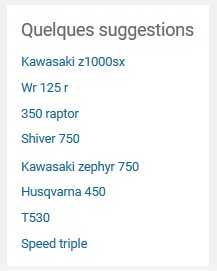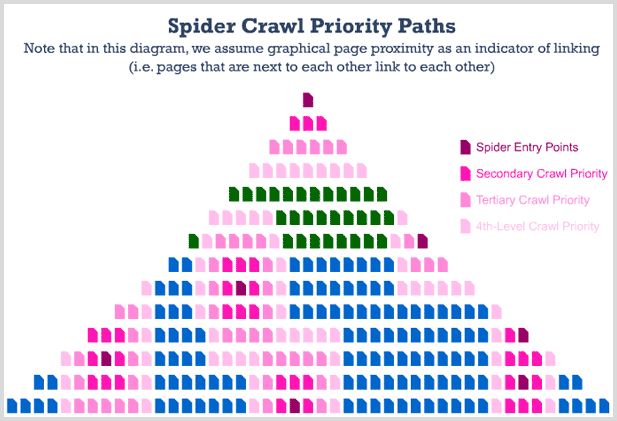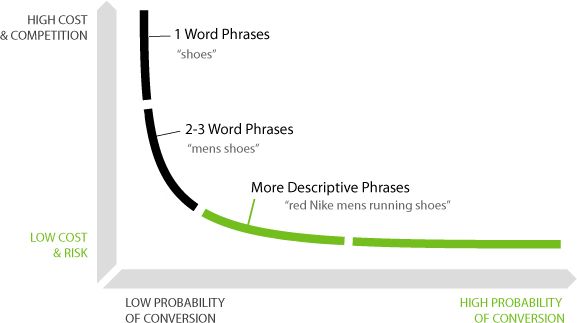Internal linking: 15 benefits for your website’s SEO
Underestimating the importance of Internal Linking in an SEO strategy is common.
Everyone knows the importance of external links (backlinks) to ensure a minimum of visibility, but most site publishers neglect internal linking.
In contrast, e-commerce sites have well grasped its importance on their side.
However, once your site relies on content, internal links are as essential to your visibility as external links, to :
- Increase the number of long-tail keywords
- Better respond to users’ queries
- And ultimately, increase your visibility and your organic traffic
Here are all the detailed benefits that the internal linking can bring to your site :
1. Internal linking is the necessary supplement to Link Building
Getting external links to your site is important. The problem is that you are dependent on others. And that it takes time, a lot of time, for results that are never guaranteed.
Conversely, you have full control over your internal linking. No dependency on a third party; you master the chain from beginning to end-link anchor, quality of the page sending the link, and the location of the landing page.
With the internal linking, and contrary to the external linking, you can :
- Determine which keywords to use in your text anchors
- Select precisely the pages that will issue the links, depending on their authority
- Choose the target pages according to each keyword
This will allow you to :
- Choose which pages you want to boost
- Improve the understanding of your site by search engines
- Position yourself on keywords that external links will never bring you
2. The ROI of the internal linking is (almost) unrivaled
Do you know which SEO technique has allowed Amazon and Rueducommerce to position themselves in Google’s first results on tens of thousands of keywords?
It is the internal links.
By putting in place relevant keyword suggestions (see screenshot below), most large e-commerce websites can position themselves based on keywords that specifically target users’ queries, improving the discovery of new products by search engines.

A site like La Redoute saw its turnover increase by 30% after the implementation of this technique of dynamic categories, developed by Yannick Simon (Kysoe).
With this technique, we could create thousands of internal links, each link corresponding to a potential user’s request. All this is obviously done automatically and we can see in this example that it would be impossible to do the same thing with external links. Let’s compare:
3 hours: the average time to create a quality backlink
In an article published on Quicksprout, Neil Patel considers it unlikely to acquire more than 50 quality external links each month. This does not mean directory listings, buying links (contrary to Google guidelines), or network sites, but links to an internal page of your site, from a website benefiting from good authority, from a page talking about a theme similar to yours.
3 seconds: the average time required to create a quality internal link
As shown in one of our case studies, the automated and intelligent implementation of internal links makes it possible to boost the positioning of a page in a very significant way, apart from any link building activity.
As is the case for e-commerce, the automation of internal linking plays a crucial role in obtaining a very significant ROI, probably one of the best of all SEO activities.
3. The more links you create, the more your site is ranked
A link is often seen as the way to transfer SEO energy between two pages.
But experience shows that a link creates SEO energy on its own.
This is why it is quite possible to rank niche sites, for which competition is relatively low, without the help of backlinks, and only with internal linking.
Unlike that which is generally professed, the distribution of this energy (otherwise called link juice) does not obey the principles of physics: there is no conservation of energy.
In other words, the distribution of energy from page A to page B will also create energy (noted as ‘e’ in the graph below).

This principle is corroborated by several SEO experiments, which demonstrate in particular that obtaining links in no-follow makes it possible to improve the positioning of a page, while the no-follow attribute mechanically prevents the transfer of this SEO energy.
Similarly, and equally counter-intuitive, an external link sent from one of your articles to a similar article from another site will increase the credibility of your article and its positioning. Here again, there is SEO energy creation, but this time for the page that emits the link (“f” in the previous graph).
The more you create internal links, the more you create SEO energy for your site.
4. You control your linking 100 %
In addition to choosing keywords, target pages and link pages, you have control over the method and implementation and have the power to modify and refine your strategy over time.
You choose to which pages you send energy
Let’s say you publish a good news article about your market sector. This article enjoys good distribution, receives some backlinks in return and ensures a steady flow of visitors for a few weeks.
But, like any news article, it will be obsolete after a while
The interest of the internal linking will be to transmit the SEO energy accumulated on this article to one or more articles or pages that will be more newsworthy, and therefore able to respond to the requests of the internet surfers.
5. You can change your mind and reconfigure your internal linking
Unless you have a good dose of immobility, your site gets rich regularly with new product pages or new articles. You may also want to delete certain categories and create new ones.
While it will be very difficult for you to have your existing backlinks modified to point to your new pages, you can reconfigure your internal linking, or even make it fully dynamic, in order to get the most out of your external links.
6. You do not have to wait
When you want to deploy a complete internal linking strategy, or simply create a new link, you can do it immediately, without waiting for the goodwill of a third party, as is the case for external links.
7. Internal linking improves the indexing of your site
When Google crawls a web page, the presence of internal links allows it to identify content that is not already present in its index, and then index it.
Thus, a site equipped with a good internal network will see its new content more quickly discovered and indexed by the search engines.
In addition, it is known that search engines like Google have multiple entry points to crawl a site. These multiple entry points are the home page and internal pages with the most backlinks (dark pages in the graphic below).

In order to maximize the effectiveness of the crawl budget (which is far from unlimited), it is imperative that the internal pages that enjoy the maximum level of authority are linked to other pages having lesser authority, which will also link to pages of minor importance.
8. Internal linking enhances navigation and user experience
One of the main objectives of internal links is to improve navigation. For search engines, as for Internet users. A site with no internal linking would have no chance of being indexed properly, but it would also divert visitors who would not be able to navigate from one page to another.
Internal links provide additional information to the reader

The most successful example of internal linking is Wikipedia. This model has since been replicated everywhere, with varying degrees of success. There are essentially two types of links:
- Contextual links are the ones that have the most SEO value. They are found inside a paragraph of text. They provide the reader with additional information on the term or related expression.
- related Links, which provide additional articles or content, related to the original article. They are usually located between two paragraphs or at the end of an article.
These links have not been set up by Wikipedia to satisfy SEO requirements, but only for the purpose of providing the reader with as much information as possible.
9. Internal linking improves the number of page views per session
Directly taken from section §7, by offering additional content via internal links, you allow your readers to stay longer on your site.
10. Internal linking decreases the bounce rate
In the same way, the more your visitors stay on your site, the lower your bounce rate will be.
Note on the bounce rate and the number of page views per session :
For these two potential benefits, it is important to consider the number of internal links per page (contextual and related links). A single internal link per page will have very little (if any) effect on the bounce rate, session time, and the number of page views per session. Conversely, a number of important links (as on Wikipedia) will have a significant impact.
11. Internal linking increases the number of long-tail keywords
Long-trail keywords are phrases that usually include at least 3 words. If “pants” is a generic keyword, “black slim pants” is a long-tail keyword.
Long-trail keywords are deemed to have a much higher conversion rate than generic keywords.

These keywords are essential to your SEO strategy for the following reasons :
- Their conversion potential is much higher than for a conventional keyword (typically 2 to 3 times more)
- Their level of competition is generally low. It is therefore rather easy to position oneself on these keywords
- 70 % of requests are long trail requests
Most SEO experts agree that internal linking is the central element that will allow you to position yourself on long-trail keywords if your link anchors are sufficiently diversified. If only one sentence should be retained, it would be that of Rand Fishkin of Moz :
“Most of the time it is possible to position yourself on long-trail keywords without external links, only by using internal links” – Rand Fishkin, in Long Tail SEO : When & How to Target Low-Volume Keywords – Whiteboard Friday
12. Internal linking prevents keywords cannibalization
Cannibalization of keywords occurs when Google crawls your site and sees several pages relevant to the same keyword.
The problem that Google has to solve is to understand how to choose in all these pages the one that responds best to the request of an internet surfer.
By allowing Google to manage only the association between your content and users’ requests, you are penalizing your site in the most important way possible, and this situation can have disastrous impacts, notably in terms of overall traffic , conversion rate or as we will see below, click-through rate.
How do you prevent cannibalization of keywords?
The econsultancy website has published an excellent article on how to prevent this cannibalization phenomenon if an effective internal linking strategy, coupled with content hubs (tags or categories), is implemented.
But the content hub is not a prerequisite: you can orient the query-content association to a particular article or page that will meet the user’s need. This is done by means of internal links
13. Internal linking boosts your organic traffic
An image is better than an explanation, here is the result of an automated deployment of the internal linking on an English-speaking site (1,500 articles concerned out of a total of 4,500).

Between the date of deployment of the internal links and the measurement carried out 7 weeks later, the organic traffic was multiplied by 2.5 (no other SEO actions were undertaken in the meantime).
14. Internal linking improves your click-through rate
The organic click-through rate (CTR) is the ratio between the number of clicks on a search result and the number of times that this result is displayed. The larger the organic CTR, the greater the match between what the internet user is looking for and what the search engine offers.
Do you remember cannibalizing keywords? Here’s what happens when you allow Google to better associate queries from users and content on a site.

As soon as the internal linking was deployed, the organic CTR rose in one week from 3.07 to 4.13, an increase of 34 % in other words
7 weeks later, the organic CTR was measured at 5.61, representing an increase of 81% (while the average positions recorded by the search console increased overall, due to the increase in keywords of long trains).
15. Your competitors do not use the benefits of internal networking
Unless your competitors are called Amazon or BBC, there is a good chance that the internal linking remains under-exploited in any market segment.
Related Post: Understand Internal Linking best practices.
Next: Read How to associate target entities to web pages for semantic SEO
or return to the Internal Linking Guide.